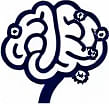Agile Methodology as a Mental Model for Adaptive Thinking
 by Marlene Keeling
by Marlene Keeling
Agile Methodology offers a framework for flexible and iterative approaches in work and life, enhancing decision-making and problem-solving. By adopting its principles, individuals can improve adaptability in business and personal development, fostering better outcomes through collaboration and reflection.

Agile Methodology represents a way of thinking that emphasizes flexibility and iteration. This approach originated in software development but extends to broader applications in daily life and professional settings.
The Foundations of Agile
Agile focuses on breaking down tasks into smaller, manageable parts. These parts allow for regular adjustments based on feedback. For instance, Agile Methodology encourages teams to work in short cycles, known as sprints, to build and refine ideas progressively.
In business, this method promotes efficiency by prioritizing outcomes over rigid plans. Key elements include collaboration among team members and continuous improvement. By applying these ideas, professionals can respond quickly to changes in their environment.
Applying Agile to Cognitive Development
Cognitive development benefits from the iterative nature of Agile. This process helps individuals refine their thinking patterns over time. For example, regular reflection on experiences can lead to better problem-solving skills.
One practical aspect is how mental models like Agile aid in learning from failures. People often use this framework to adapt their strategies, making it easier to handle new challenges. In psychology, such models support growth by encouraging a mindset that values experimentation.
Benefits in Business Strategies
Business strategies improve through the adaptability offered by Agile. Companies use this method to stay competitive in dynamic markets. It involves setting clear goals and reviewing progress frequently, which leads to more effective decision-making.
Teams that adopt Agile often see enhanced productivity. For example, a project manager might organize work into phases, allowing for adjustments as needed. This not only streamlines operations but also boosts overall team morale.
Practical Steps for Implementation
To implement Agile in everyday life, start with simple steps. Begin by identifying key objectives and breaking them into smaller actions. Use tools like daily check-ins to track progress and make necessary changes.
Here are some ways to get started:
- Define short-term goals to maintain focus.
- Gather feedback from peers regularly.
- Adjust plans based on what works best.
This approach can be particularly useful for lifelong learners. By incorporating iterative processes, individuals build resilience and creativity in their pursuits.
Real-World Examples
Consider how startups apply Agile to launch products. They test ideas early and iterate based on user input, reducing risks in the long run. In education, teachers might use similar techniques to adapt lesson plans, ensuring students engage more effectively.
These examples show how Agile transcends its origins, becoming a tool for personal and professional growth. Its emphasis on collaboration fosters environments where innovation thrives.
Challenges and Solutions
While beneficial, Agile is not without hurdles. Some may struggle with the need for constant adaptation. To address this, focus on building routines that support flexibility, such as scheduled reviews.
Over time, these practices lead to stronger habits. Individuals who persist often find that the method aligns with their goals, enhancing overall satisfaction.
Conclusion
In summary, Agile Methodology serves as a powerful mental model for fostering adaptability and growth. By embracing its core ideas, curious individuals and professionals can enhance their cognitive skills and business approaches. This framework encourages a proactive stance, making it a valuable asset for lifelong learning.
